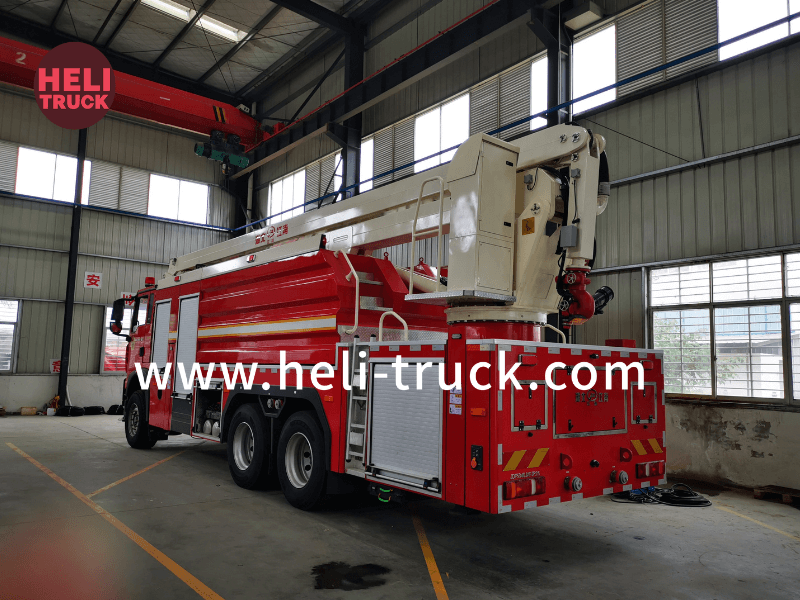Introduction
Garbage compactor trucks play a crucial role in waste management systems by efficiently collecting and compacting solid waste for disposal. These specialized vehicles are designed to handle various types of waste materials while ensuring optimal efficiency and safety. In this article, we will delve into the detailed specifications of garbage compactor trucks, including their key features, components, and functionalities.
1. Types of Garbage Compactor Trucks
There are several types of garbage compactor trucks available in the market, each designed for specific waste management needs. The most common types include:
- Rear Loading Compactor Trucks: These trucks are equipped with a rear-loading mechanism that allows waste collection through a hopper at the rear of the vehicle. Once the waste is loaded, a compaction mechanism compresses the waste to maximize the truck's capacity.
- Front Loading Compactor Trucks: Front loading compactor trucks feature a front-loading mechanism that allows waste collection from commercial and industrial bins. These trucks are commonly used in urban areas with high waste generation rates.
- Side Loading Compactor Trucks: Side loading compactor trucks are designed with a side-loading mechanism that enables the collection of waste from curbside bins. These trucks are suitable for narrow streets and areas with limited access for larger vehicles.

2. Key Specifications of Garbage Compactor Trucks
a. Capacity: Garbage compactor trucks come in various sizes and capacities, ranging from small compactors with a capacity of a few cubic yards to large trucks with capacities exceeding 40 cubic yards. The capacity of the truck determines the volume of waste it can collect and compact in a single trip.
b. Compaction Ratio: The compaction ratio of a garbage compactor truck refers to the ratio of the original waste volume to the compacted volume. A higher compaction ratio indicates more efficient waste compression, allowing the truck to carry more waste before requiring disposal.
c. Chassis: The chassis of a garbage compactor truck serves as the foundation of the vehicle and provides structural support for the compaction unit. The chassis must be robust and durable to withstand the rigors of waste collection operations.
d. Compaction Mechanism: The compaction mechanism is the heart of a garbage compactor truck, responsible for compressing the waste to reduce its volume. Common compaction mechanisms include hydraulic rams, augers, and paddle systems, each offering unique advantages in terms of efficiency and reliability.
e. Hydraulic System: Garbage compactor trucks are equipped with a hydraulic system that powers the compaction mechanism, bin lifting system, and other operational functions. A robust hydraulic system is essential for smooth and reliable operation of the truck.
f. Control System: The control system of a garbage compactor truck includes electronic controls and monitoring devices that allow the operator to manage compaction, bin lifting, and other functions. Advanced control systems may feature automation capabilities for improved efficiency.
g. Safety Features: Garbage compactor trucks are equipped with various safety features to protect operators and ensure safe operation. These may include emergency stop buttons, backup alarms, cameras, and warning lights to prevent accidents and injuries.
h. Bin Lifting System: Many garbage compactor trucks are equipped with a bin lifting system that allows for easy loading and unloading of waste containers. The bin lifting system can be hydraulic or mechanical, depending on the truck's design and specifications.
3. Popular Garbage Compactor Truck Brands
Several renowned manufacturers produce high-quality garbage compactor trucks with advanced features and specifications. Some of the popular brands in the market include:
- Heil Environmental: Heil Environmental is a leading manufacturer of waste collection and compaction equipment, offering a wide range of garbage compactor trucks for various applications.
- McNeilus: McNeilus produces innovative and reliable garbage compactor trucks known for their durability and performance in demanding waste management environments.
- PakMor: PakMor specializes in manufacturing compact and efficient garbage compactor trucks designed for urban and residential waste collection operations.
- Volvo: Volvo is a well-known manufacturer of heavy-duty trucks, including garbage compactor trucks, known for their quality, safety, and advanced technology.
- Mack Trucks: Mack Trucks offers a range of garbage compactor trucks that combine power, efficiency, and durability to meet the demands of waste management operations.
4. Maintenance and Servicing of Garbage Compactor Trucks
Proper maintenance and servicing are essential to ensure the optimal performance and longevity of garbage compactor trucks. Regular maintenance tasks may include:
- Inspecting and replacing hydraulic hoses and fittings to prevent leaks and ensure proper hydraulic system operation.
- Checking and adjusting the compaction mechanism for optimal performance and efficiency.
- Lubricating moving parts to reduce friction and wear, extending the lifespan of critical components.
- Inspecting and replacing worn-out Small refuse compactor trucks , such as seals, bearings, and filters, to prevent breakdowns and malfunctions.
- Conducting routine inspections of the chassis, body, and hydraulic system for signs of damage or wear.
- Training operators on proper truck operation and maintenance practices to enhance safety and efficiency.
Conclusion
Garbage compactor trucks are vital assets in waste management systems, offering efficient and reliable waste collection and compaction capabilities. Understanding the specifications and features of these specialized vehicles is essential for selecting the right truck for specific waste management needs. By considering factors such as capacity, compaction ratio, chassis design, and safety features, operators can ensure optimal performance and longevity of their garbage compactor trucks. Regular maintenance and servicing are key to maximizing the lifespan and efficiency of these vehicles, contributing to effective waste management practices and environmental sustainability.
